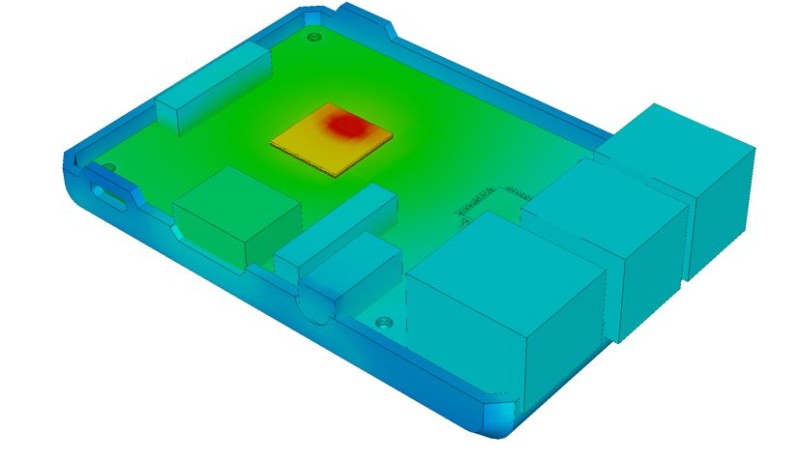Prevent overheating problems on your Raspberry Pi 3
December 27, 2016
on
on

Good! The ‘new’ Raspberry Pi 3 has a new Cortex-A53 quad-core processor with 64-bit architecture and it sure beats most earlier versions as far as the performance vs clock speed tradeoff is concerned.
But all’s not well. A series of posts like this one on Raspberry Pi subreddit raise concerns that the Pi 3’s new processor runs extremely hot when operating at full CPU load. While the Raspberry Pi Foundation has responded to several overheating issues, including offering a firmware fix, the folks at 6SigmaET wanted to find out exactly why the processor was causing so many concerns — and what customers could do about it.
6SigmaET developed a detailed thermal simulation model based on the available data of the Raspberry Pi 3. This would allow the company to investigate the component temperatures in various casing and environmental scenarios. This simulation was then compared (6SigmaET say: “calibrated”) against measurements from a thermal imaging camera. Both the measurements and end simulation highlighted that the Pi’s CPU naturally runs very hot at around 110 °C. While this is not hot enough for the CPU to cut out, it is likely to reduce its lifetime if run continuously at this temperature.
The issue is sure worsen when the RPi 3 is fitted in a standard plastic Raspberry Pi case, which can be expected to raise the processor temperature to 120 °C which is excessive for prolonged use. A heat sink is clearly the optimal route, providing far better cooling than the more complex option of adding a fan or allowing for additional ventilation within your Pi case.
But all’s not well. A series of posts like this one on Raspberry Pi subreddit raise concerns that the Pi 3’s new processor runs extremely hot when operating at full CPU load. While the Raspberry Pi Foundation has responded to several overheating issues, including offering a firmware fix, the folks at 6SigmaET wanted to find out exactly why the processor was causing so many concerns — and what customers could do about it.
6SigmaET developed a detailed thermal simulation model based on the available data of the Raspberry Pi 3. This would allow the company to investigate the component temperatures in various casing and environmental scenarios. This simulation was then compared (6SigmaET say: “calibrated”) against measurements from a thermal imaging camera. Both the measurements and end simulation highlighted that the Pi’s CPU naturally runs very hot at around 110 °C. While this is not hot enough for the CPU to cut out, it is likely to reduce its lifetime if run continuously at this temperature.
The issue is sure worsen when the RPi 3 is fitted in a standard plastic Raspberry Pi case, which can be expected to raise the processor temperature to 120 °C which is excessive for prolonged use. A heat sink is clearly the optimal route, providing far better cooling than the more complex option of adding a fan or allowing for additional ventilation within your Pi case.
Read full article
Hide full article



Discussion (4 comments)
Richard Cooke 8 years ago
The mount Raspberry3 PCB in a dicast aluminum box,
using heatsink paste between CPU and the case.
But then the WIFI, bluetooth, signals would not leave the case.
Tom Oke 8 years ago
The result is that I can run the Pi3 at 100% processor for extended periods of time while the processor does not report temperatures over the low 70's, or less.
(/sys/devices/virtual/thermal_zone0/temp (reads in milli-degrees C and shows your system temperature).
Though the case is aluminium I have not found degradation of WiFi or Bluetooth.
Fabián Rodrigo Romo 8 years ago
Does anyone know if there is this problem in Compute Module?
madiha khan 8 years ago